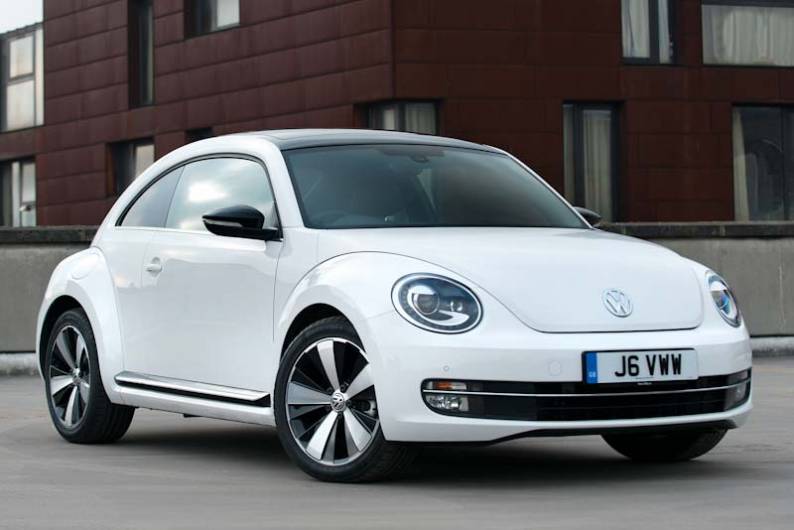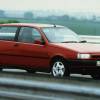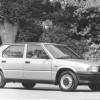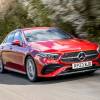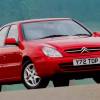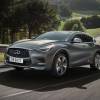
RAC sale – up to 33% off*
• Roadside cover from £5.29 a month†
• We get to most breakdowns in 60 mins or less
• Our patrols fix 4/5 breakdowns on the spot

By Jonathan Crouch
Introduction
In 2011, once more, Volkswagen reinvented the Beetle. Bigger and more efficient than its predecessor, the 'A5'-series third generation version might not have looked quite so extrovert as its predecessors but it was a far better car. More importantly for its target market amongst retro rivals, it was also a more stylish one. Aesthetics matter. Go on. Live a beautiful life. Let's see how this model stacks up as a used buy.
Models
3drdr Hatch / 2dr Convertible
History
As you'll probably already know, the Volkswagen Beetle model line comes with quite a history. If you're not familiar with that, then we'll need to turn the clock back for you to the early 1940s. To be quite frank, we don't have much to thank Adolf Hitler for, but his vision of what he called the KdF-Wagen ('KdF' means 'kraft durch freude', the old Nazi slogan 'strength through joy') - the German 'Peoples' Car' - certainly had something to be said for it. Later generations of buyers were to know that model much better by another name, the Volkswagen Beetle, and over 21 million examples had been sold worldwide by the time, in 1998, the German brand finally got round to bringing us a modern version.
What was known then as the 'New Beetle' of course shared nothing apart from its iconic name and curvy shape with the first generation version. And quite right too. The crude, noisy and comfortless rear-engined air-cooled original was the last thing modern buyers were likely to want. Their idea of Beetle motoring was very different from that of the basic, functional transport envisioned by the original's creator, Dr Ferdinand Porsche. The New Beetle was less of a 'Peoples' Car' and more of a 'Peoples' Plaything', early US buyers including Beverly Hills celebrities, a president's daughter and exclusive car rental establishments.
A million New Beetles were sold over thirteen years, 68,000 of them in the UK, but the modern take on this iconic design was never quite the success it might have been. The curvy Toytown looks and touches like the flower vase on the dash left it as an exclusively feminine and fashion-centric choice, buyers who quickly forsook its charms when at the turn of the century, the 'New MINI' and much later, the reinvented Fiat 500 came along. By 2011, Volkswagen wanted them back and aimed to achieve that with this third generation 'A5'-series model, a car that aesthetically at least, was much closer to the design of the original. Longer, wider and lower than its predecessor, It was intended to look more sporty, masculine and dynamic. And because the Golf underpinnings remained - this time more modern ones - it could be a more practical choice than its retro rivals. Add very competitive running costs, perky performance and a dash of hi-tech and you've a car that ought to have reignited the Beetle cult all over again. Strangely though, it didn't. A Convertible version was added to the range in 2013. The whole line-up was lightly facelifted in 2015 and a lifestyle-orientated 'Dune' version added to the range. Production finished in 2019 and the car was not replaced.
What You Get
Looking back, the style of the second generation 1997-era 'New Beetle' didn't have much in common with the original. That car was defined by three semi-circles - front wing, rear wing and domed roof - which determined its cartoon-like look. This 2011-era 'A5'-series design dispensed with that geometry, based on larger, more modern Golf underpinnings. Not a good basis, you'd think, for trying to better replicate the 1940s original, but the design team resolved to try anyway. A post-war original version was parked in their office and the stylists were told to immerse themselves in Beetle memorabilia.
And sure enough, something of a feel of Dr Ferdinand Porsche's early 'Peoples' Car' somehow made it through to this third generation model, most notably in the large wheels plumply positioned beneath the flared flowing arches and a rear C-pillar that follows the contours of the original design. So there's something of the past, artfully mixed with a sporty vision of the future. Really? A sporty-looking Beetle? It was quite a new concept for British buyers but not so for the American market this car was primarily aimed at. The US holds a strong historical Beetle-tuning culture and wanted potency rather than design pastiche when the time came for this MK3 model.
They got it. Perhaps the most notably visual change in this respect was the lower roof that the larger floorplan enabled to be swept further back. At the front where the big circular headlamps were unique in the Volkswagen range from the period, there was a longer bonnet in front of a more steeply raked windscreen that was shifted further back. Overall, it was a cleaner, more self-confident lower profiled look that even had something of a touch of Porsche 911 about it.
Moving inside this three-door-only body shape, you notice that the frameless doors open wide - but not so wide as to make ingress difficult in tight parking spaces. And at the wheel, you're seated behind a traditional upright dashboard with a set of three traditional dials visible through a sporty three-spoke thin-rimmed wheel. Unfortunately, the plastics are traditional too, so no Golf-like soft-touch surfaces. Still, the quality seems good even if the Mexican factory didn't seem to screw things together quite up to German-fabricated Golf standards. Still, the look and feel all seem to suit this car's retro vibe, especially with the body-coloured door sill and dash inserts you get on plusher models. And on that subject, other early Beetle touches include the upwards-opening glovebox, natty elastic straps instead of door pockets and the optional auxiliary instruments you can specify to sit above the infotainment controls. You'll look in vain for the MK2 Beetle's dash-mounted flower vase though. Good.
Volkswagen claims that those confined to the two-seater bench at the back got a better deal than before, despite the lack of a roofline previously so high that wedding guests could wear their hats on the way to the ceremony. It was lower in this 'A5'-series model, but compensation was provided by the bigger floorplan's greater length and width, supposed to benefit both leg and elbow room. Fine in principle but in practice, the way the body tapers towards the rear makes this back seat a necessarily cosy place. It's fine though for kids - or adults on relatively short journeys. And miles better of course, than a MINI or a Fiat 500.
Out back in the space where the original Beetle once had its air-cooled engine, this MK3 Beetle has a boot lid that swivels upwards - together with the rear windscreen - when opened, revealing 310-litres of cargo capacity, 50% more than the previous model. The sloped boot lid makes it awkward to carry taller items though. Push forward the 50:50 split-folding rear seat and the space on offer can increase to as much as 905-litres, which makes this by far the most practical of all the retro-style models on the market from this period.
What You Pay
Please fill in the form here for an exact up-to-date information.
What to Look For
Most owners of this 2011-2019-era 'A5'-series MK3 Beetle model we surveyed were very happy with their cars, but inevitably, there have been those who have had problems you'll want to look out for. One owner had two rear arm bushes, a front coil and whole new ignition barrel and steering lock go in a year, plus a brake fault and an electrical fault. That was the exception though. Generally, this particular Beetle seems pretty stoutly built. Parking sensors weren't standard on entry-level models, so look out for scrapes and dents on cheaper-spec cars. Many variants used light-coloured materials that can look grubby if not looked after. There were three product recalls for this design in its production life. The first was in 2011 for starter motors on diesel models which may overheat. The second related to a potential loss of steering stability due to a deformed rear axle on models produced between 2011 and 2013. Lastly, there is a possible fire risk on models made between April and August 2014 because of a fuel leak. With variants affected, check that the necessary dealer visits have been made.
Replacement Parts
[based on a 2015 model Beetle 1.4 TSI ex VAT] An air filter will be priced in the £10 to £18 bracket, an oil filter will sit in the £6 to £12 bracket. A radiator will likely cost around £98. The front brake discs we came across commonly sat in the £50 to £70 bracket, with pricier-branded discs costing between £120 and £250. The rear brake discs we came across commonly sat in the £45 to £82 bracket, with pricier-branded discs costing up to around £160. Rear discs sit in the £27-£80 bracket. Front brake pads are in the £17 to £44 bracket. Rear pads cost in the £13-£32 bracket. A headlamp is around £163. A water pump is around £97-£146. A radiator is around £98. Wiper blades cost around £3-£13.
On the Road
It wasn't only the look of the original (1997-2010 period) 'new' Beetle that put male buyers off. Driving one was a curious experience that seemed to position you and the steering wheel right at the centre of the car. Add feeble engines and copious amounts of body roll and it was hard to imagine a much less sporty experience. To change the buying demographic, all that had to change with this 2011-era 'A5'-series model. And it did.
As you'd expect it would with underpinnings from a 2009 Golf MKVI rather than a Nineties Golf MKIV (which was what had been served up before). It feels a more serious car with all the previous design's Noddy-style touches - the ridiculously high roof and the enormously over-sized speedometer - thankfully dispensed with. You sit more purposefully behind three beautifully crafted dials, grasping a thin-rimmed steering wheel and positioned closer to the swept-back windscreen. On the move, because the body's stiffer, so the corner turn-in's sharper. It's still no sports car - still no MINI come to that - but it's much closer to the class standard.
If anything, the engineers might have gone a little too far down the 'sporty' route. The ride can be a little unsettled over poorer surfaces, one reason why we'd steer very well clear of examples fitted with 19-inch wheels or the sports suspension option. Neither option will help in town where at least you'll appreciate the rather over-light electric power steering, if not the slightly notchy 6-speed manual gearbox: urbanistas will want models featuring the 7-speed DSG double-clutch automatic option.
Beyond the city limits though, compensation comes on faster flowing roads where the damping really is very impressive. No, it's not quite as good an overall ride and handling package as you'll find in a Golf from this period, but to compare these two cars is an irrelevance. You'll buy a Beetle because it's a bit of fun and because there aren't too many compromises required in doing so. And that's all a million miles from the dull, sensible practicality of Golf motoring. Even Golf GTI motoring, this hot hatch having donated many of the underpinnings for this car. Including a de-tuned 200PS version of its turbocharged petrol engine for the top 2.0 TSI Beetle which fires it to sixty in around 7.5s on the way to nearly 140mph.
That 2.0-litre petrol derivative is the only Beetle variant to feature the Golf's state-of-the-art multi-link rear suspension set-up. Lesser models - the ones most people actually bought - got a simpler, cheaper torsion beam arrangement, hence perhaps the slightly poorer ride. Most 'A5'-series MK3 Beetles you'll come across will have the 1.4 TSI petrol engine, probably the pick of the range, offering a 160PS output from a unit that uses both supercharging and turbocharging to produce a healthy 240Nm of torque, good enough to see this car to sixty from rest in 8.3s, so it's nearly as quick as the 2.0-litre variant. It's pretty good round the twisty stuff too, like its larger-engined stablemate sharing the Golf GTI's clever XDS electronic differential lock. This improves handling through fast corners by selectively braking the unloaded wheel on the inside of the curve, so preventing wheel spin and firing the car through the bend.
But even rejuvenated Beetle motoring isn't really about high performance and with that in mind, you may feel minded to save a little and opt for the lower-powered petrol derivative or one of the diesels. Petrol-wise, you're looking at a turbocharged 1.2 TSI unit, surprisingly punchy despite its modest 105PS output. With 175Nm of torque on tap, sixty here is 10.9s away en route to 111mph. Also offering 105PS is the 1.6-litre TDI diesel option with its frugal BlueMotion Technology mods, a unit that slots under a minority interest 2.0 TDI with 140PS.
Overall
You could argue that in this MK3 design, we finally got the proper Beetle tribute model we should have had in the first place. This car borrows its heritage, its silhouette and its retro uniqueness from the post-war original, but fuses it with the sort of fuel economy, safety and creature comforts that the modern buyer demands - without the retro excesses and gender-specific touches of the second generation car. With the 'A5'-series MK3 model, the sportier look was matched by a sportier feel from an efficient range of engines but even so, this is a design you'll still either love or hate.
Which is just as it should be. A model like this remains an unashamed indulgence, both on the part of its maker and those who will buy it. True, the trend modern Beetles once set for High Street chic was quickly copied by a whole clutch of rivals. Yet you can see why loyal owners love this Volkswagen so much. It certainly isn't a rational choice. But then, if we did everything for rational reasons, the world would be very dull indeed. Just as its original predecessor did over seventy years ago, this car made the automotive landscape just that little bit brighter.

